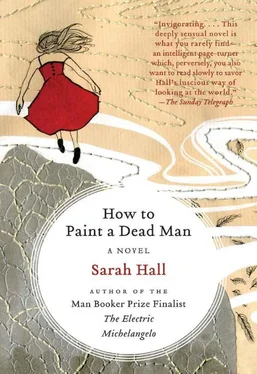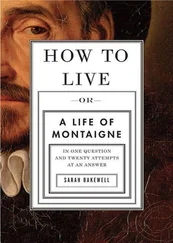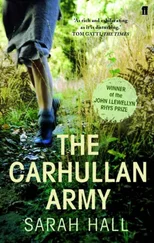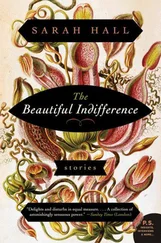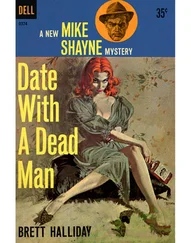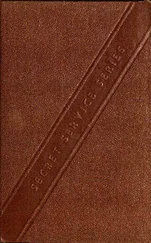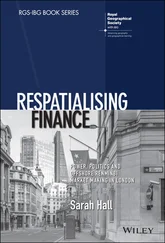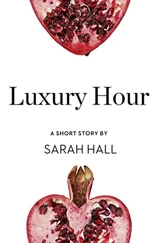Sarah Hall - How to Paint a Dead Man
Здесь есть возможность читать онлайн «Sarah Hall - How to Paint a Dead Man» весь текст электронной книги совершенно бесплатно (целиком полную версию без сокращений). В некоторых случаях можно слушать аудио, скачать через торрент в формате fb2 и присутствует краткое содержание. Год выпуска: 2009, Издательство: Harper Perennial, Жанр: Современная проза, на английском языке. Описание произведения, (предисловие) а так же отзывы посетителей доступны на портале библиотеки ЛибКат.
- Название:How to Paint a Dead Man
- Автор:
- Издательство:Harper Perennial
- Жанр:
- Год:2009
- ISBN:нет данных
- Рейтинг книги:4 / 5. Голосов: 1
-
Избранное:Добавить в избранное
- Отзывы:
-
Ваша оценка:
- 80
- 1
- 2
- 3
- 4
- 5
How to Paint a Dead Man: краткое содержание, описание и аннотация
Предлагаем к чтению аннотацию, описание, краткое содержание или предисловие (зависит от того, что написал сам автор книги «How to Paint a Dead Man»). Если вы не нашли необходимую информацию о книге — напишите в комментариях, мы постараемся отыскать её.
, Sarah Hall, "one of the most significant and exciting of Britain's young novelists" (
), delivers "a maddeningly enticing read... an amazing feat of literary engineering" (
).
How to Paint a Dead Man — читать онлайн бесплатно полную книгу (весь текст) целиком
Ниже представлен текст книги, разбитый по страницам. Система сохранения места последней прочитанной страницы, позволяет с удобством читать онлайн бесплатно книгу «How to Paint a Dead Man», без необходимости каждый раз заново искать на чём Вы остановились. Поставьте закладку, и сможете в любой момент перейти на страницу, на которой закончили чтение.
Интервал:
Закладка:
Danny. Danny’s long, symmetrical form could not be displayed after he had died. It could not be handsomely arranged on the boughs of a bonfire, under the bitter glow of Orion. He could not be exhibited ever again. You would never see a last physical reflection of yourself in him, never take his hand, never kiss his forehead. The familiar markings-scar on his chin, scar on his leg, moles, bitten fingernails-were gone, skimmed off by tyre tread, diced between the axles. He was his remains. He was bits and pieces. He was annihilated, and there was no option available except the gathering up of his body parts by police officers from among the bicycle spokes, the slipping of red lumps into sealed bags-his hand, his scalp-and the hosing down of the tarmac. Your father was informed that body identification was inadvisable, no, it was impossible, so it was done from a neck chain and a ring, his back molars and his ever-empty wallet. Danny’s coffin was closed; it was roomy, providing a sympathetic optical illusion, though it was nowhere near to being filled.
Translated from the Bottle Journals
It is time to be honest. My lungs are beginning to fail. They work only to half their capacity and they commit me to the house much of the time. I have missed two weeks of teaching. Walking the hill has become difficult, and breathing monumental, as if I am indisposed to the air itself. The cypresses at the end of the road seem further away than ever. I shall be sad not to be able to visit them. I like to see them become luminous in the late evening, as if full of green elixir, or watch their branches shuddering in a downpour, their leaves at a furious boil in the wind. All I can do now is salute them from my window.
Though I have days of high energy and optimism, the reverse is often true. It is unfortunate to be an intermittent tutor at the school, and unfair to the children, but if I cannot speak for the rust blowing loose around my heart, what use is my presence among them? If I continue to be absent no doubt the mistress will march the children up here in a prim line, like goats with bells, such is her fanaticism.
The prohibition of ageing! Even bending to retrieve the key from the floor where Theresa has dropped it now requires a Spartan’s stamina! Recovering the leather suitcase of mementos and photographs beneath the valance is almost impossible. There is a great pressure in my chest when I stand, as if I were being trampled at the bottom of the old grape vats. Often Theresa will find me, winded in my armchair after returning from a short walk, and then there will be a lecture. She has taken to clipping out these new health warnings from the cigarette packets after they have been thrown out and putting them like coupons in a little pile. What does she hope to exchange them for?
I have had discussions with the doctor about my immodest use of cigarettes. He knows I have a high tolerance for them. But he is a man who favours the pipe, and cannot be too strict on such matters for fear of decommissioning his own habit. Besides, we have both breathed in the debris of our destroyed cities. He too, in his quiet green surgery, habitually clears his throat and recalls the dark dust of towers and loggias. We are old emphysemics, and when we talk we breathe out the past. It is history that makes mortals of us. Florio is concerned. We await the results of the X-ray and I have made a promise to rest. I have mounted my brass pocket watch on the studio wall and I will try to smoke less often, especially at night.
I am intrigued by the business of the X-raying cathode. It appears there is no limit to human inquisitiveness. The procedure is so strange: I did not feel it, but the nurses were instructed to leave the room and the technician wore a heavy lead-lined tabard to avoid radiation. Such a thing is an intrusion of the boldest kind; it is a miracle of science. Or perhaps it is simply a miracle, whereby our divine structures are revealed. The device is being used now to investigate paintings as well as we humans. To expose what was broken and re-cast in a composition is to reveal the fallibility of an artist. The spilled varnish and the misaligned hand, the lost saint and the irregular ghost pavement. All those errors and adjustments in the studios of the past. And in us-the chips and fractures and tumours, the flaws in our exceptional design. Truth has become a hunted thing, but it is eternally insubstantial. The philosophers have always known this.
I am compelled by the possibility of such revelation for the sake of teaching, yet I confess to be horrified by the scrutiny of my own interior and afraid of the evidence. What secrets will they find beside these tarred lungs? A heart full of historic sadnesses perhaps. The soft blue face of Dina, like a cyanotype; the many layers of guilt and the badly repaired peace.
During the allied bombing, we watched our industrial architecture become shingle and relic. The Pope negotiated on behalf of the city of St Francis and others, where it was considered the wealth of Italy lay, but the city of Bologna was unlucky. All the cities of the north came under fire. At that time I felt I could not record any item manufactured by human hand. Instead I turned to the objects of the sea. The paintings of this era were small in scale. All around was devastation, and I painted the shells I had owned as a boy. In the still-lifes they are blushing, as if more than calcium, as if more than invertebrate, and closer in texture perhaps to human ears. There were bodies in the rubble. Sometimes it was possible to hold a mother and daughter, the priest, and the church in which they had all prayed, together in one hand. Many felt this intimate travesty during the rescue operations.
After the war, and the loss of Dina, I moved south to the old region of my family. ‘Take me home,’ the Spanish poet cried to the ocean. ‘Take me home, for I am weary of wars.’
The shell paintings ran for one series. They were not removed from my studio by the Germans, who looted our homes as they withdrew to the north, though several landscapes and still-lives were taken and have never been recovered. They are in locations unknown; even Antonio cannot seem to trace them. The war paintings are owned by the Vatican and a collector in New York. They are known as The Fighting Shells.
Antonio has sent me a good selection of newspapers and catalogues this week. We also spoke on the hospital telephone after my appointment, and he is keen to visit me as soon as we know more. I know he is worried. In his note he inquires after my health, as ever, and asks if there is anything I wish for to make life more comfortable. He comments on some of the articles-the commercial forces of Europe are shifting, he notes. I could have hoped for no more considerate son, were I to have had one. Often Antonio’s parcels threaten to spill open, they are so full of cuttings and columns that he thinks will be of interest. He sends copies of the Paris Review and The Nation. Also the London periodicals and the strip cartoons, which I enjoy.
The news from abroad is intriguing. Krauss and Hughes have taken up the arguments of Rosenberg and Canaday. Abstract Expressionism remains deeply divisive. I do not agree with the theory that in these vast dragged canvases chaos and arrogance are the central motives. The idea of subconscious production is intriguing to me. Intuition remains such a mystery. The objections, however, seem more about notoriety, the fashion of the artists, which restaurants they eat in and with whom they socialise. From obscurity to notoriety in less than a year-it is the era of celebrity. The artist is as the movie star.
There is a new exhibition in London. A painting I donated a few years ago has temporarily been placed amid the opposing forces of North America. It is creating a stir. It has been done deliberately to polarise, but I do not mind this. In fact, I believe it is often necessary for the curators to provoke such discussions. Naturally, there are two opinions of my painting. The first: it is a fierce little thing, all the more worth attending to because it is dwarfed by hysterical compositions. It is contemporary Italy. The second: though it is formally competent, it is a defunct painting. Like Cepheus-the dead constellation-it contains no bright star. Italy is represented by the nostalgic, a redundant cosmos.
Читать дальшеИнтервал:
Закладка:
Похожие книги на «How to Paint a Dead Man»
Представляем Вашему вниманию похожие книги на «How to Paint a Dead Man» списком для выбора. Мы отобрали схожую по названию и смыслу литературу в надежде предоставить читателям больше вариантов отыскать новые, интересные, ещё непрочитанные произведения.
Обсуждение, отзывы о книге «How to Paint a Dead Man» и просто собственные мнения читателей. Оставьте ваши комментарии, напишите, что Вы думаете о произведении, его смысле или главных героях. Укажите что конкретно понравилось, а что нет, и почему Вы так считаете.
